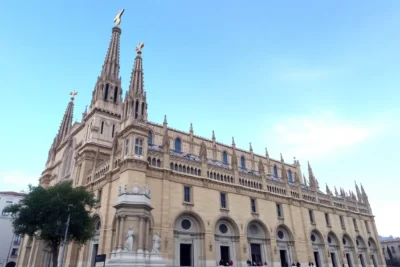
- Exploring the Architectural Genius of Antoni Gaudí in the Sagrada Familia
- The Symbolism Behind the Design Elements of Sagrada Familia
- How the Sagrada Familia Reflects Gaudí's Unique Artistic Vision
- The Ongoing Construction of Sagrada Familia: A Testament to Gaudí's Legacy
- Cultural Significance of the Sagrada Familia in Modern Barcelona
- Unraveling the Mysteries of the Sagrada Familia's Facades and Interiors
The architectural genius of Antoni Gaudí has left an indelible mark on the world, with the Sagrada Familia standing as his most iconic work. This breathtaking basilica not only showcases Gaudí's unique style but also embodies his deep spiritual vision and connection to nature.
As we explore the Legacy of Antoni Gaudí: Sagrada Familia Masterpiece, we uncover a stunning blend of artistry and engineering that continues to inspire millions. The ongoing construction of this magnificent structure is a testament to Gaudí's enduring influence and the dedication of those working to realize his ambitious dream.
Exploring the Architectural Genius of Antoni Gaudí in the Sagrada Familia
Antoni Gaudí's architectural genius is vividly reflected in the intricate designs of the Sagrada Familia. His use of natural forms and geometric shapes creates an organic harmony that feels both innovative and timeless. Gaudí drew inspiration from nature, evident in the towering columns that resemble tree trunks, supporting the basilica's grand ceiling like a forest canopy.
The structure's facades are a testament to Gaudí's profound understanding of light and shadow. Each side of the Sagrada Familia tells a different story, showcasing biblical themes through elaborate sculptures and detailed carvings. For instance, the Nativity Facade is rich in ornamentation, celebrating the birth of Christ with a vibrant display of life, while the Passion Facade presents a stark contrast, emphasizing the solemnity of Christ's suffering.
Gaudí's innovative approach also includes his pioneering use of hyperboloids and parabolic arches, which not only enhance the aesthetic appeal but also ensure structural integrity. This groundbreaking methodology sets the Sagrada Familia apart from typical Gothic architecture. Here are some key architectural elements that exemplify Gaudí's brilliance:
- Vaulted Ceilings: Inspired by natural forms, allowing for greater height and luminosity.
- Colorful Stained Glass: Designed to create a kaleidoscope of colors within the interior.
- Spiral Towers: Symbolizing the connection between heaven and earth.
As construction continues, the Sagrada Familia remains a living project, with each new phase reflecting Gaudí's original vision. His unique ability to blend function with spirituality not only defines his legacy but also serves as a source of inspiration for architects and artists around the world. The Sagrada Familia is not merely a building; it is a monument to creativity and a celebration of life itself.
The Symbolism Behind the Design Elements of Sagrada Familia
The Sagrada Familia is rich in symbolism, with each design element carefully crafted to convey deeper meanings. For instance, the three grand façades represent different aspects of Christ's life: the Nativity, the Passion, and the Glory. These façades not only illustrate biblical narratives but also reflect Gaudí's belief in the interconnectedness of faith and nature.
Furthermore, the basilica's columns are designed to mimic the trunk and branches of trees, symbolizing life and growth. This organic approach emphasizes Gaudí's vision of a sacred space that harmonizes with the natural world. The overall structure resembles a forest, inviting visitors to experience a sense of tranquility and divine presence.
In addition, the use of light plays a crucial role in the symbolism of Sagrada Familia. The colorful stained glass windows are not merely decorative; they are intended to create a spiritual atmosphere by filtering sunlight into a dazzling array of colors. This phenomenon evokes a sense of heavenly illumination, enhancing the worship experience for those who enter the basilica.
Lastly, Gaudí's choice of geometric forms, such as the hyperboloid structures, is not only aesthetically pleasing but also serves to convey the notion of divine perfection. The intricate patterns and mathematical precision in these designs reflect a deeper understanding of the universe, making the Sagrada Familia a true masterpiece of symbolic architecture.
How the Sagrada Familia Reflects Gaudí's Unique Artistic Vision
The Sagrada Familia is a profound reflection of Gaudí's unique artistic vision, characterized by its innovative integration of natural forms and spiritual symbolism. Gaudí believed that architecture should echo the beauty of nature, which is evident in the organic shapes and intricate details throughout the basilica. His design principles emphasize fluidity and movement, creating an architectural experience that transcends traditional boundaries.
One of the most striking aspects of Gaudí's work is his ability to manipulate light within the Sagrada Familia. The play of light and shadow not only accentuates the structure's beauty but also serves to elevate the spiritual atmosphere inside. The colorful stained glass windows filter sunlight into a mesmerizing spectrum, creating a dynamic environment that changes throughout the day.
Furthermore, Gaudí’s incorporation of geometric forms extends beyond aesthetics; it embodies his understanding of nature's underlying patterns. The use of hyperboloids and parabolic arches not only enhances the visual appeal but also provides structural strength, showcasing his innovative approach to architecture. Here are some key aspects of how these elements reflect Gaudí's vision:
- Natural Inspiration: Designs mimic the shapes and forms found in nature, promoting harmony and balance.
- Symbolic Architecture: Each element is imbued with spiritual significance, enhancing the overall narrative of the basilica.
- Dynamic Light Play: The interplay between light and structure adds a layer of spiritual experience for visitors.
Ultimately, the Sagrada Familia serves as a testament to Gaudí's revolutionary ideas and his belief in the unity of art, nature, and faith. The basilica not only stands as a monumental architectural achievement but also as a lasting influence on contemporary architecture, inspiring future generations to explore the depths of creativity and spirituality in design.
The Ongoing Construction of Sagrada Familia: A Testament to Gaudí's Legacy
The ongoing construction of the Sagrada Familia stands as a remarkable tribute to Antoni Gaudí's visionary legacy. Even though Gaudí passed away in 1926, his groundbreaking design continues to evolve, captivating architects and visitors alike. This architectural marvel is not just a historical relic; it represents a living project that embraces modern technology while staying true to Gaudí's original vision.
The construction process employs advanced techniques, such as computer-aided design and 3D printing, which allow for precise replication of Gaudí's intricate details. These innovations enable builders to create complex forms that were once considered impossible. The synergy between traditional craftsmanship and modern engineering showcases a deep respect for Gaudí's methods, ensuring that each stone laid is a testament to his artistic intent.
As the Sagrada Familia nears its completion, expected in the coming years, the project has inspired a global conversation about the intersection of art, faith, and architecture. This monumental basilica stands as a beacon of creativity, encouraging contemporary architects to explore their own artistic visions. The Sagrada Familia is, in essence, a celebration of human creativity, inviting everyone to partake in its unfolding story.
Moreover, the ongoing construction highlights the collaborative effort of skilled artisans and craftsmen who are dedicated to honoring Gaudí's legacy. Each phase of the project is marked by meticulous attention to detail and a commitment to preserving the spiritual essence embodied in the basilica's design. The Sagrada Familia remains a profound symbol of artistic ambition, showcasing how dedicated effort can keep an artist's dream alive through generations.
Cultural Significance of the Sagrada Familia in Modern Barcelona
The cultural significance of the Sagrada Familia in modern Barcelona extends far beyond its architectural grandeur. As a UNESCO World Heritage site, it embodies the rich history and unique identity of the city, making it a pivotal symbol of Catalan culture. Visitors from all corners of the globe flock to admire its intricate designs, which serve as a reminder of Barcelona's artistic heritage and the visionary genius of Antoni Gaudí.
Moreover, the Sagrada Familia acts as a crucial point of connection between past and present. Its ongoing construction highlights the city's commitment to preserving its architectural legacy while embracing modern innovations. This juxtaposition not only fosters a dialogue about the evolution of art and architecture but also enables the current generation to contribute to a historic masterpiece, ensuring that the spirit of Gaudí lives on in contemporary society.
In addition to its architectural significance, the Sagrada Familia plays an essential role in the spiritual life of the city. It serves as a place of worship, drawing locals and tourists alike for reflection and connection to the divine. The basilica's design promotes a sense of tranquility and inspiration, enhancing the religious experience for those who enter. This fusion of spirituality and artistry is a cornerstone of its cultural importance, making it a sanctuary for many.
Lastly, the Sagrada Familia is a catalyst for social and economic development in Barcelona. Its status as a major tourist attraction generates substantial revenue, supporting local businesses and fostering community engagement. Events and exhibitions held in and around the basilica further enrich the cultural landscape, reflecting the dynamic and evolving narrative of Barcelona as a vibrant, modern metropolis shaped by its historical roots.
Unraveling the Mysteries of the Sagrada Familia's Facades and Interiors
Unraveling the mysteries of the Sagrada Familia's facades and interiors reveals a complex interplay of artistic vision and spiritual symbolism. Each facade serves a distinct narrative purpose, with intricate sculptures and carvings that invite contemplation. The Passion Facade, for instance, starkly contrasts the Nativity Facade with its somber representation of Christ’s suffering, embodying the duality of joy and sorrow that is central to the Christian faith.
The interiors of the Sagrada Familia are equally mesmerizing, featuring columns that resemble tree trunks and branches, creating a forest-like atmosphere. This design not only reflects Gaudí's inspiration from nature but also enhances the spiritual experience for visitors. Key elements that contribute to this unique ambiance include:
- Stained Glass Windows: Designed to cast vibrant colors and patterns throughout the basilica.
- Soaring Vaults: Allowing for an ethereal sense of height and space.
- Natural Light: Carefully orchestrated to shift throughout the day, enhancing the emotional impact of the space.
Moreover, Gaudí's innovative use of geometry is evident in the hyperboloid structures that make up the interiors, symbolizing divine perfection and harmony. These forms not only elevate the aesthetic appeal but also serve practical purposes in maintaining structural integrity. The blending of geometric precision with organic aesthetics creates a narrative that speaks to the unity of faith and nature.
As visitors traverse the Sagrada Familia, they embark on a journey that transcends mere architecture; they enter a space where every detail is imbued with meaning. The basilica’s design invites reflection on the mysteries of faith and existence, making it a profound masterpiece that continues to inspire awe and reverence long after Gaudí's time.
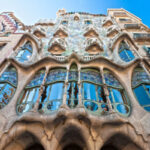 Gaudí's Famous Barcelona Buildings
Gaudí's Famous Barcelona Buildings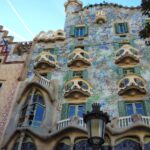 Gaudí's Masterpiece: Casa Batlló
Gaudí's Masterpiece: Casa Batlló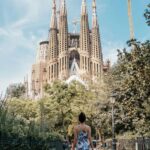 Unveiling the Wonders Inside Barcelona's Sagrada Familia: A Journey Through Architectural Marvels
Unveiling the Wonders Inside Barcelona's Sagrada Familia: A Journey Through Architectural MarvelsIf you want to know other articles similar to Legacy of Antoni Gaudí: Sagrada Familia Masterpiece you can visit the category Sagrada Familia.
Deja una respuesta


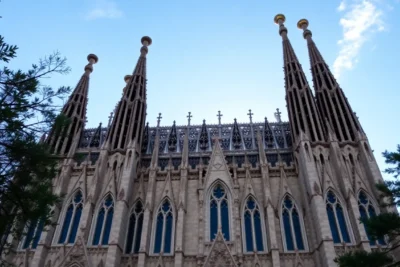
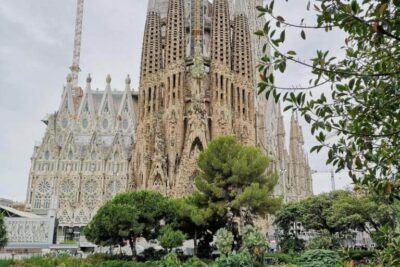
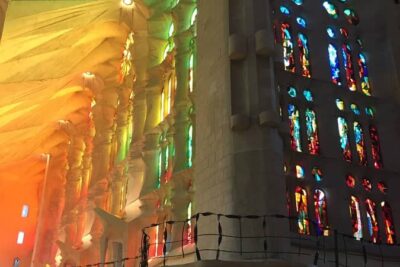
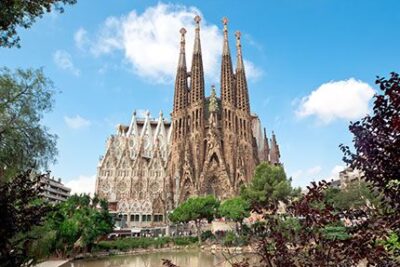
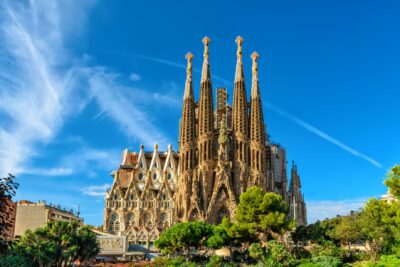

Read more!